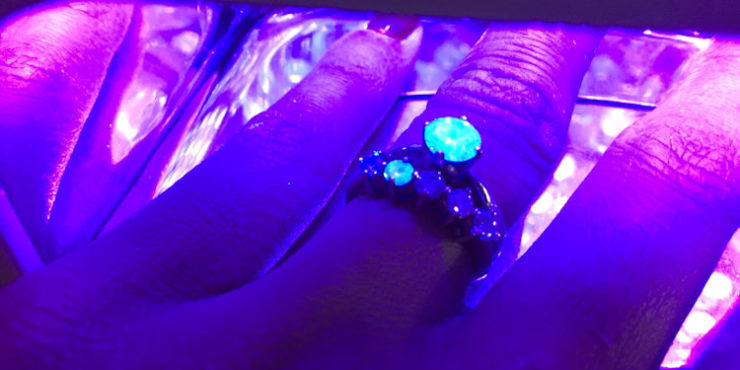Diamonds are a unique creation of nature, each possessing distinctive characteristics that contribute to their allure. Among these traits, fluorescence can bring an intriguing glow to diamonds under ultraviolet (UV) light. However, in some rare instances, strong fluorescence can lead to an unusual effect known as ‘overblue’.

Decoding the ‘Overblue’ Effect
In the context of diamonds, the ‘overblue’ effect refers to a phenomenon where a diamond with strong fluorescence appears hazy or oily, particularly in sunlight or under strong UV light. Despite its relatively infrequent occurrence, the overblue effect has drawn significant attention due to its potential to impact a diamond’s visual appeal and, subsequently, its value.
The Science Behind ‘Overblue’
Fluorescence in diamonds is primarily due to trace amounts of boron or aluminum in the gem’s structure. The ‘overblue’ effect occurs when the fluorescent reaction to UV light is so strong that it continues even under normal lighting conditions, causing the diamond to look somewhat milky or oily. This effect can be more apparent in diamonds with a higher color grade (D-H) and intense fluorescence.
Identifying ‘Overblue’ Diamonds
Determining whether a diamond exhibits the ‘overblue’ effect can be challenging without the right equipment and expertise. Professional gemologists and diamond graders usually rely on controlled UV light sources and specific viewing conditions to identify these diamonds. However, the overblue effect is most noticeable in natural daylight, so a simple visual inspection in sunlight can provide valuable insights.
‘Overblue’ and Its Impact on Diamond Value and Desirability
The impact of the ‘overblue’ effect on a diamond’s value and desirability can be quite significant. Due to the potential haziness, diamonds demonstrating this effect may be less sought after, especially among buyers seeking a clear and brilliant gem. This decreased demand can lead to a lower market value for these diamonds compared to their non-fluorescent or weakly fluorescent counterparts.
Conversely, some collectors and enthusiasts might be attracted to ‘overblue’ diamonds due to their rarity and distinct visual characteristics. Thus, while the ‘overblue’ effect might generally be seen as a drawback, it can, in some cases, spur interest and increase desirability.
The Overblue Effect: Rarity and Unpredictability
The ‘overblue’ effect is not just a unique diamond trait but also an illustration of the exquisite unpredictability of natural gems. Understanding this phenomenon is crucial for both diamond buyers and sellers, as it can significantly affect a diamond’s aesthetic appeal and market price. While generally considered a rarity, the ‘overblue’ effect offers another layer of complexity and intrigue in the fascinating world of diamonds.